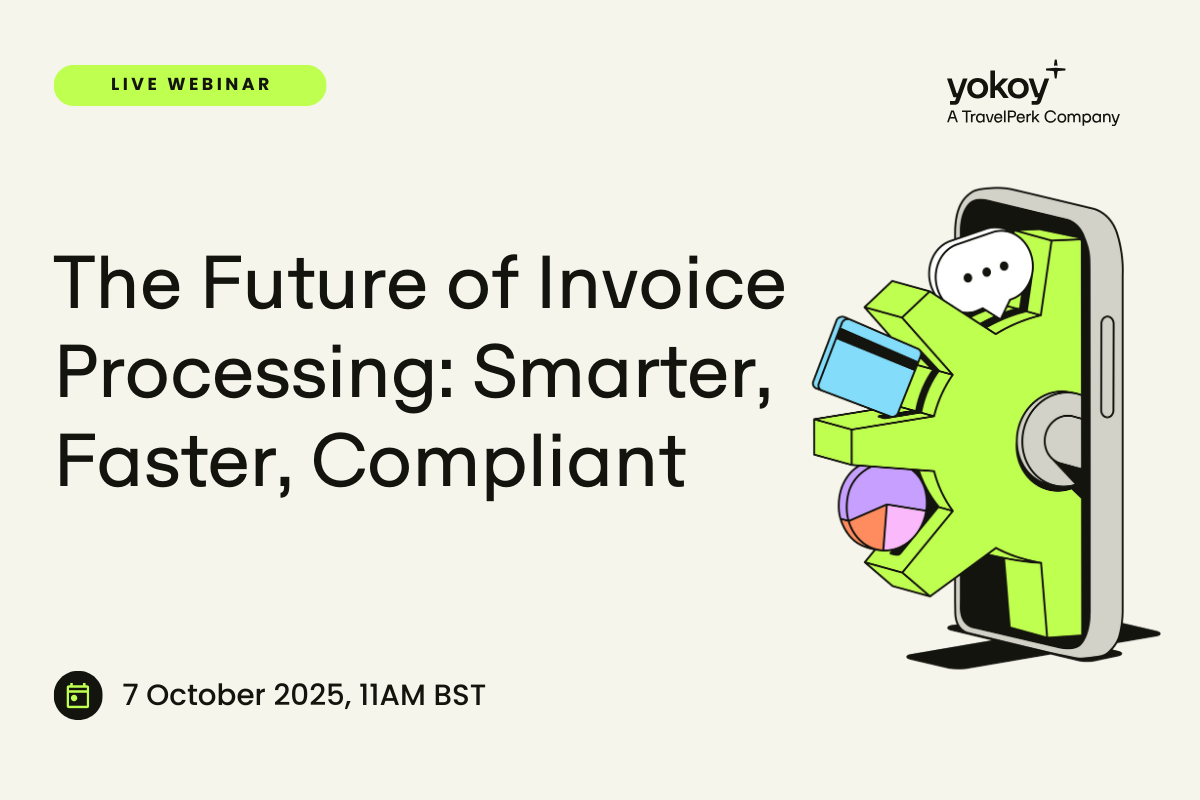Home / AI in Finance: 10 Use Cases You Should Know About in 2024
AI in Finance: 10 Use Cases You Should Know About in 2024
- Last updated:
- Blog
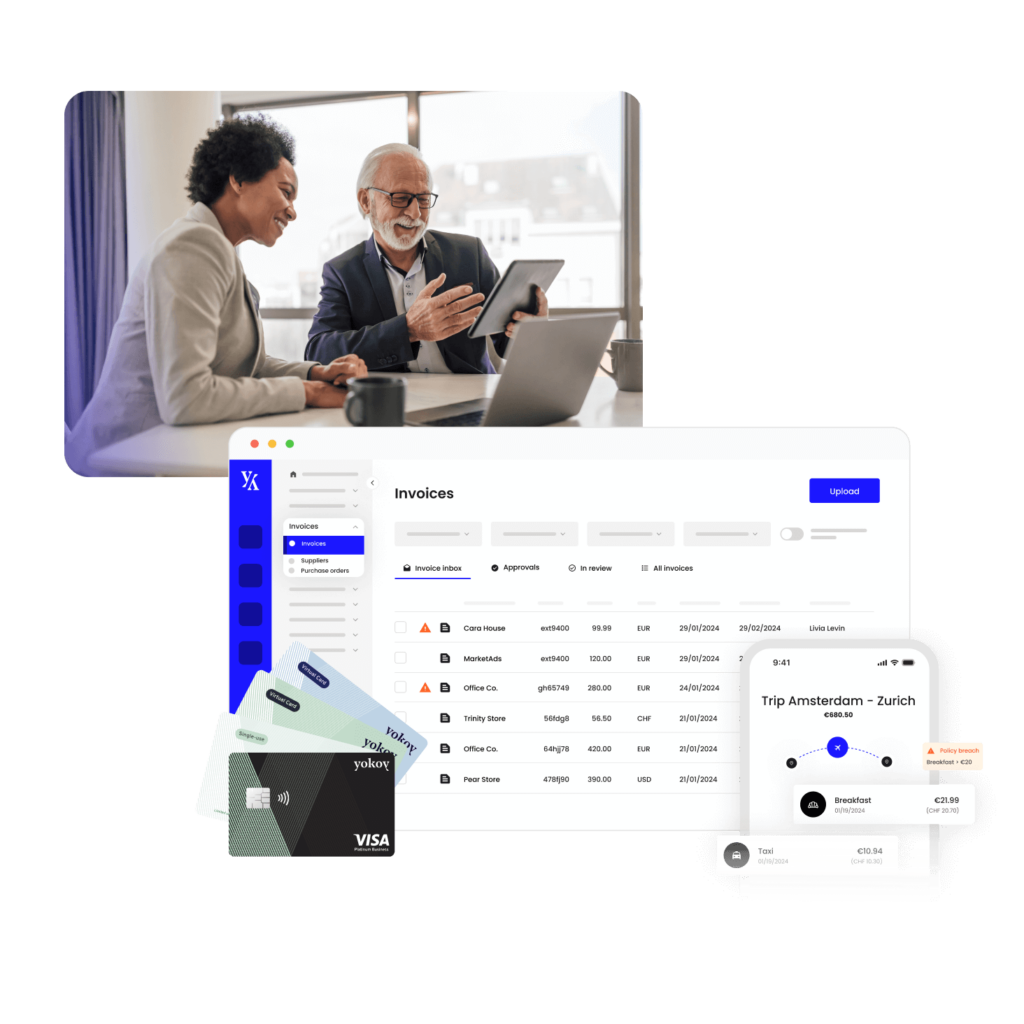
Co-founder & CCO, Yokoy
The use of finance AI is on the rise, a study by Gartner estimating that by 2025, 75% of finance teams will be using AI-powered applications to automate tasks and improve decision-making processes.
While this number may seem unrealistically high, the same study found that AI technologies are already used by 52% of finance leaders, in one way or another. More than half of the surveyed leaders reported that they’ve already integrated some form of AI technology into their daily work.
And as AI technology continues to advance and become more accessible, it’s expected that more finance departments will adopt it. In fact, it’s likely that most of the processes that can be automated with machine learning and AI will be.
To give just an example: At Yokoy, we use AI to automate the spend management process, both in terms of logic and process steps. This process is ideal for AI-powered transformation, because in its traditional form, it involves a lot of manual work, from data entry to approvals and spend analysis.
With the help of artificial intelligence, this process can be almost fully automated, saving time, reducing costs, and providing valuable insights into spending patterns, for increased spend control and better forecasts.
Thus, we believe that any financial process that relies on time-consuming manual steps, is rule-based, and involves large amounts of data, will not be immune to the trend.
So in this article we’ll look at the different applications of AI in finance departments, to show you how this technology can be used to increase efficiency, eliminate errors and risks, and drive growth.
How is AI technology used in finance?
While the finance department is typically cautious about introducing anything that may pose unnecessary risks or threats, it may seem like there is no room for AI applications.
In reality, AI has found its place in finance and is increasingly being used to enhance various processes.
Let’s look at these cases one by one. We’ll start with the spend management process, as this is our main area of expertise. However, you’ll see that many of these use cases are applicable to other financial processes too.
AI for process automation
Automating processes is probably the most common use case of artificial intelligence in the finance industry, as this technology has evolved enough to be able to take over most of the tasks traditionally performed by humans.
We’ll look at some specific spend management applications immediately, but for now, I think it’s safe to say that the entire financial service sector and the finance teams in companies of all sizes can benefit from AI-powered process automation.
However, it’s worth making a distinction here between OCR – optical character recognition, and AI.
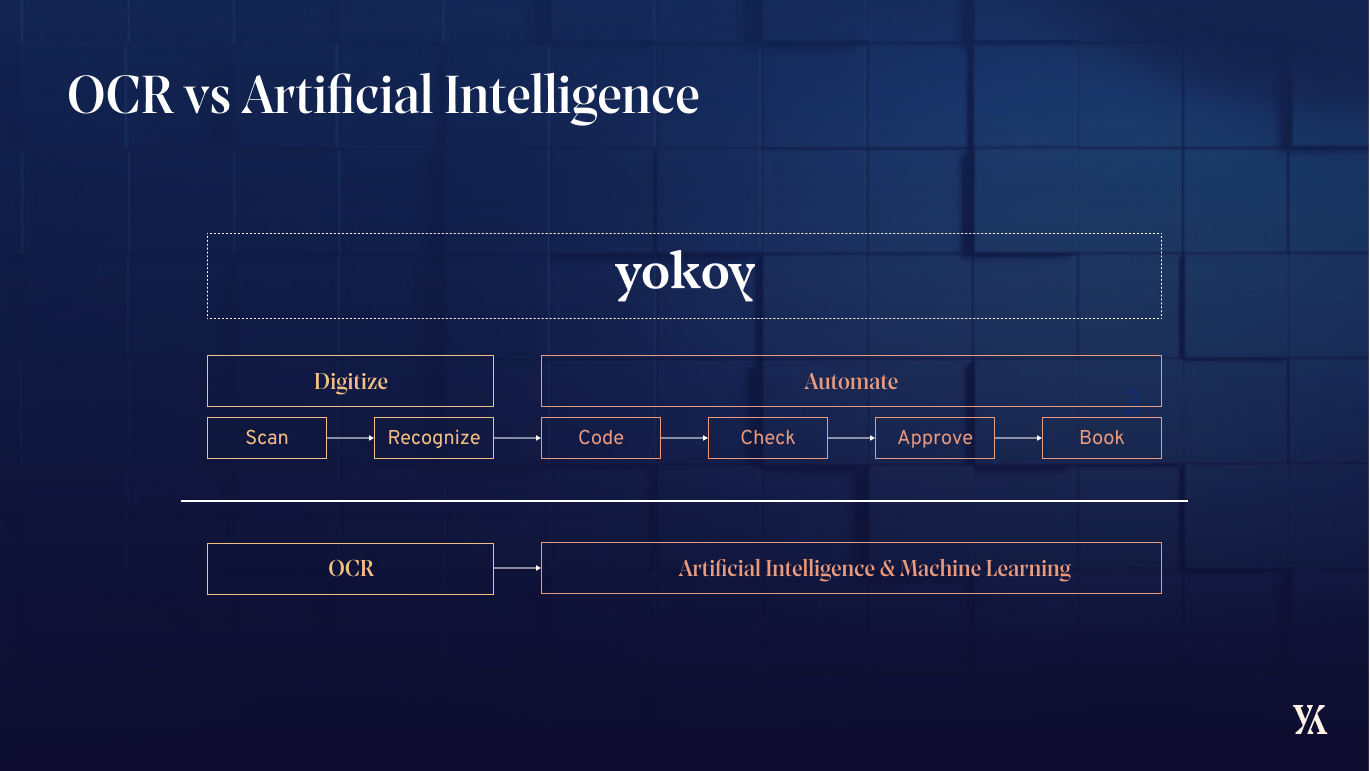
OCR is a technology that is designed to recognize and convert text from scanned documents or images into machine-readable text. It enables computers to “read” and understand printed or handwritten text and turn it into digital data.
OCR technology is a subset of AI and is used extensively in financial institutions to automate tasks such as document processing, data extraction, and fraud detection.
AI, on the other hand, refers to the simulation of human intelligence in machines that are programmed to perform tasks that typically require human intelligence, such as problem-solving, decision-making, and learning.
AI technology is incredibly versatile and can be used in various applications, including chatbots, predictive analytics, natural language processing, and image recognition, among others.
Both OCR and artificial technology play a crucial role in automating financial processes, but their applications are distinct and serve different purposes.
Now let’s take a closer look to some specific AI-powered automation scenarios that apply to the spend management process.
BAWAG Group achieved end-to-end efficiency with Yokoy
“Yokoy stands out as a visionary company that offers a truly unique solution. Their customer success team has played a pivotal role in automating our spend management processes.”
Enver Sirucic, CFO BAWAG Group

Automated receipt processing and expense categorization
In the expense management process, AI is able to address four main challenges:
- Automating the time-consuming manual steps,
- Eliminating errors and decreasing risks,
- Enforcing compliance,
- Ensuring real-time visibility and control over spending
Here’s how these challenges are addressed in practice.
First, artificial intelligence can be used to automate the receipt processing step and the categorization of expenses by extracting data from invoices, and then interpreting the data. As shown above, the data extraction step is done through OCR technology, while the actual interpretation of the information is done through AI algorithms.
Along with matching the cost center exactly based on the spend category, the AI scans the information to detect outliers and policy breaches, and recognizes the VAT amounts that can be reclaimed for each expense type.

Yokoy’s AI model uses pre-defined rules and learns from each receipt and expense report processed, getting smarter with time.
The use of AI for data extraction removes the need for manual data entry, saving time, eliminating human errors, and making it easier for finance teams to track spending and manage their finances in real time.
AI can also automatically match receipts with the corresponding transactions, improving accuracy and reducing the effort required by manual reconciliation. This step is further simplified by the use of smart corporate cards for business-related purchases.
Blog article
Automatic Receipt Extraction: Remove Manual Data Entry with OCR and AI Technology
Manual data entry for processing receipts is time-consuming and prone to errors. Here’s how to automate the receipt extraction process with OCR and AI.

Andreea Macoveiciuc,
Growth Marketing Manager
Invoice processing automation with AI
When processing invoices, artificial intelligence can be used for different purposes, some of them similar to those described in the section above.
For example, Yokoy’s AI extraction engine for invoices can read and extract data such as the invoice number, supplier name, invoice date, due date, currency, line items, VAT rate, and so on.
When an invoice is uploaded into the tool, the AI model analyzes line items submitted by that particular supplier, and looks for associations between keywords and selected line items. Once this analysis is done, the AI model applies the learnings and pre-populates the dedicated fields, eliminating the need for human intervention almost entirely.
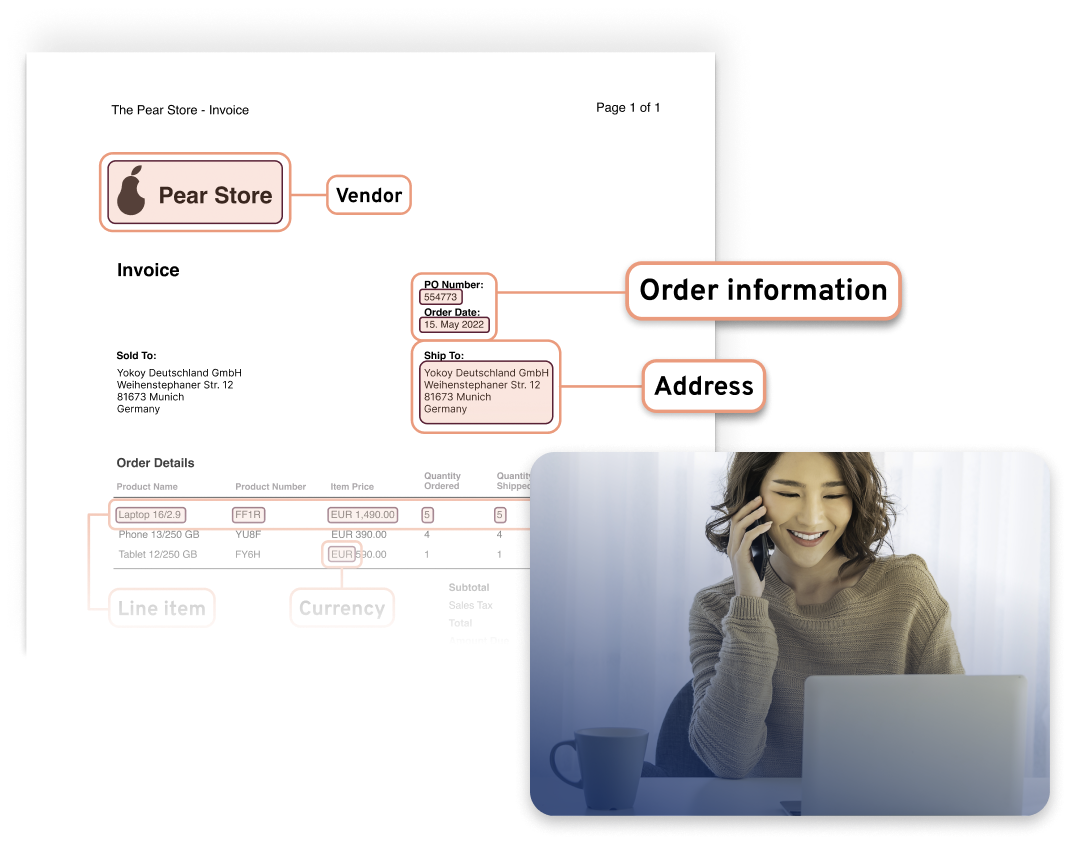
Given that in most companies, 80% of invoices come from 20% of suppliers, the accuracy rates can be improved by training the model on supplier-specific invoices.
The standard extraction accuracy in the industry is 60-80%. By working with supplier-specific models, Yokoy’s AI-engine is able to process invoices with much higher accuracy rates than other invoice automation apps on the market.
In general, to extract such information, a mix of OCR and NLP is used. NLP or natural language processing is the branch of AI that gives computers the ability to understand text and spoken words in much the same way human beings can.
Blog article
Automated Invoice Processing: Process Steps and How to Get Started
What is invoice processing automation all about? Learn how AI-powered invoice automation works and how it can help you save time, reduce risks, and improve your view of cash flow.

Mauro Spadaro,
Product Manager
As previously explained, OCR can read the text on the invoice and identify the relevant fields, such as the invoice number and supplier name. AI is then used to extract unstructured data such as the description and line items. To do this, the artificial intelligence model analyzes text to identify patterns and keywords.
Machine learning can also be used to train an AI engine to recognize different formats and layouts of invoices, making it more accurate and efficient at extracting the data.
By using such techniques, AI-based invoice processing tools are able to read and extract all the relevant information from invoices quickly. This reduces the need for manual data entry and eliminates human errors, making the invoice processing workflow more time- and cost-efficient.
Additionally, the extracted data can be used for spend data analysis and reporting, providing valuable insights into the business’s finances and helping to improve both control over budgets and financial decision-making.
Next to these use cases, AI algorithms can be used to match invoices with purchase orders and receipts, ensuring that the amounts and details on the invoice are correct. This helps prevent overpayments and errors in the procurement process.
Automated VAT reclaims
AI can be used for VAT reclaims, to automate and streamline the process of identifying and recovering overpaid VAT. The process typically involves the following steps:
- Data collection: VAT reclaim requires gathering invoices and receipts for purchases made by the company. This data is usually collected from different sources such as email, paper documents, and digital receipts. AI can automate this process by extracting data from various sources and consolidating it into a single database.
- Data validation: Once the data is collected, it needs to be validated to ensure that it is accurate and complete. AI can be used to compare the extracted data against the original documents and flag any discrepancies. This helps to identify errors and ensures that the information submitted for VAT reclaim is accurate.
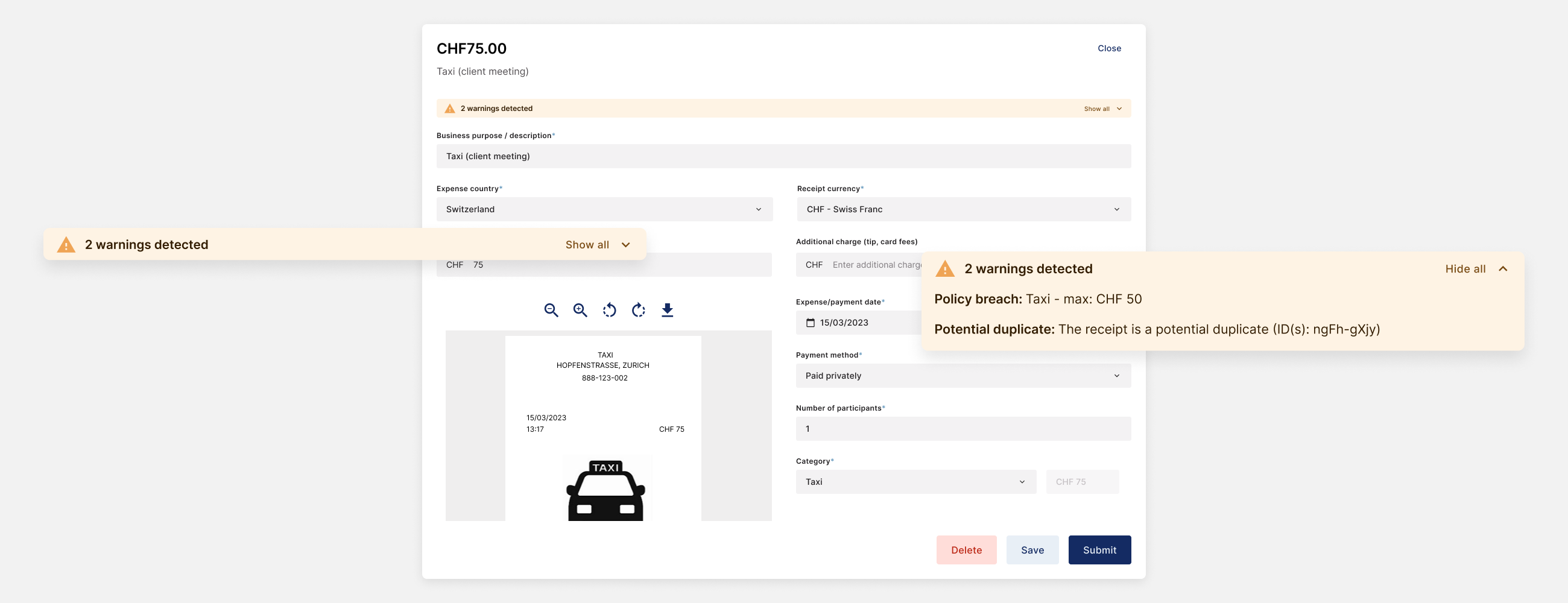
- Categorization: The data needs to be categorized according to the relevant VAT codes. AI can be used to analyze the data and automatically assign the appropriate VAT code to each transaction. This eliminates the need for manual categorization, which can be time-consuming and error-prone.
- VAT calculation: After the data is categorized, the AI system can calculate the amount of VAT that can be reclaimed based on the applicable VAT rate. This can be done automatically, saving time and reducing the risk of errors.
- VAT reclaim submission: Once the VAT amount has been calculated, the AI system can prepare and submit the VAT reclaim on behalf of the company. This eliminates the need for manual preparation and submission of VAT reclaims, which can be a tedious and time-consuming process.
Overall, AI can help with process automation, streamlining the VAT reclaim process, reducing the time and resources required to manage tax reclaims, and minimizing the risk of human errors. This can lead to significant cost savings for companies and provide greater accuracy and efficiency in the VAT reclaim process.
Beekeeper reclaims VAT automatically with Yokoy
“The Finance team can focus on exceptions only and all other expenses are processed fully automated within seconds. The VAT recognition that Yokoy helps to ensure an automated VAT reclaim.”
Herbert Sablotny, Beekeeper’s CFO

Ensuring compliance with AI
AI can help ensure compliance in finance, particularly in spend management. To achieve compliance, organizations need to understand legal and regulatory requirements, document policies and procedures, conduct regular audits, implement robust security measures, train staff, and seek legal advice.
These steps include:
- identifying data privacy regulations, anti-money laundering laws, and other relevant regulations,
- documenting AI data sources, decision criteria, and bias mitigation steps
- conducting regular audits to identify compliance gaps and AI biases
- implementing secure data storage, encryption, and access controls
- training staff on data privacy, security, and bias mitigation
- and seeking legal advice to identify legal risks and ensure compliance.
Complying with legal and regulatory requirements is essential for the responsible and compliant use of AI in spend management.
Yokoy Compliance Center
Stay up-to-date with rules and regulations around per diem rates, mileage allowances, proof of receipt, and VAT rates, while Yokoy keeps you audit-ready across countries.

Real-time, no-code approvals
Finance AI technology can be used to automate approval flows for both expenses and invoices, based on pre-set rules, such as suppliers, categories, or spending limits. This ensures that payments and reimbursements are approved quickly and efficiently.
For example, in the invoice approval flow, the Yokoy app captures the invoice and digitizes it, then it matches the invoice to the supplier and PO, codes each line item, and then a specific workflow is triggered.
Different approval flows may be used for different entities or kinds of invoices, for example: supplier based approval, cost object approval, or custom approvals. Once all these steps are done, invoices are posted to the ERP, and the spend analysis process can start.
All these steps can be done on the go, through the Yokoy mobile app, and require no coding.
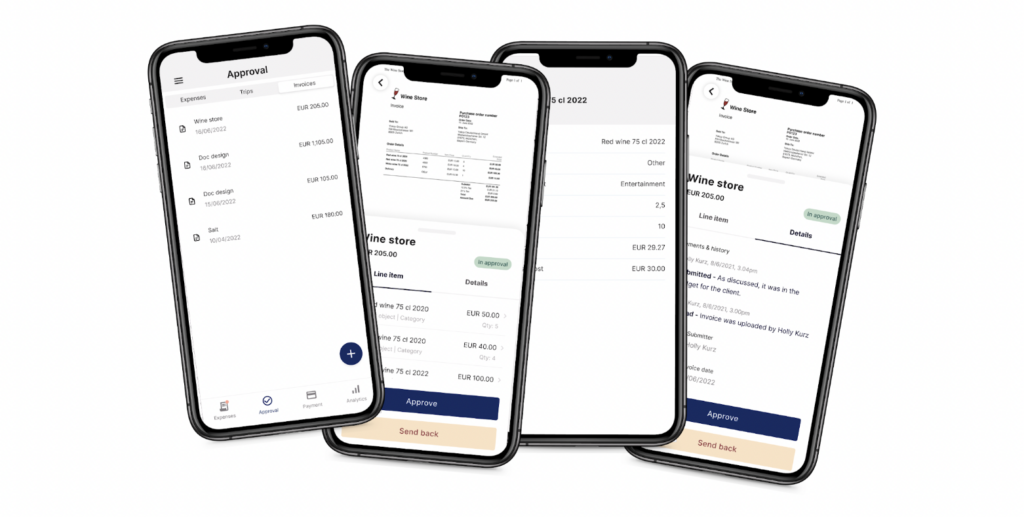
This AI-based way of processing invoices is much more efficient and less prone to error than the traditional one, where human intervention is needed at almost ever step. Yet, despite the advancements in this field, and despite the wide availability of fintech tools for invoice process automation, many companies still handle invoices manually.
Traditional processes are time consuming and can lead to delayed payments, while the use of AI in the accounts payable process can help companies manage and process invoices in a fast, effective, and transparent manner.
AI for fraud detection
Fraud detection is one of the key areas where AI can provide significant support to finance departments. Artificial intelligence can be used to analyze large datasets and identify fraudulent activities – such as credit card fraud or money laundering – in real-time.
Traditionally, fraud detection in finance has relied on rule-based systems that are limited by their ability to identify only known patterns of fraud. However, with AI, machine learning algorithms can learn from past cases of fraud and identify new patterns that may have been previously missed by rule-based systems.

In fact, a recent study found that AI algorithms outperformed traditional rule-based systems by up to 20% in detecting fraudulent credit card transactions. Additionally, AI-based fraud detection can process vast amounts of data in real-time, enabling financial institutions to detect suspicious activities with speed and accuracy.
And if we look at the spend management process specifically, AI can be used to detect fraudulent invoices, duplicate payments, and expenses that breaching company policies.
For example, with Yokoy, detecting duplicate payments is fully automated and is a matter of seconds, no human input being required.
As AI technology continues to advance, it is expected that the use of artificial intelligence technologies in fraud detection will expand further, resulting in increased efficiency, accuracy, and security in the finance industry.
Blog article
How to Prevent Expense Fraud with AI-Driven Compliance and Custom Workflows
Expense fraud is a pervasive problem that continues to plague companies of all sizes and industries. In fact, a recent survey by the Association of Certified Fraud Examiners found that organizations lose an estimated 5% of their revenue to fraud each year, with expense reimbursement fraud being one of the most common types of fraud.

Lars Mangelsdorf,
Co-founder and CCO
Risk management
Finance AI can be used to assess risks associated with financial transactions, such as loans and investments. By analyzing large amounts of data, AI algorithms can accurately predict the risks and potential outcomes of various transactions, empowering financial institutions to make better informed decisions.
While this may seem like an area where machines shouldn’t be involved, the advantages of artificial intelligence applications are significant.
In contrast to human-driven, manual procedures, AI technology is much more efficient, accurate, and consistent. It can identify patterns and relationships in data that may be difficult for humans to detect, leading to more accurate predictions.
For example, algorithms can be used to analyze the creditworthiness of loan applicants, taking into account factors such as credit score, income level, and so on. By identifying patterns and trends, AI systems can predict the likelihood of a borrower defaulting on their loan.
And this is just one example; AI-powered risk assessment has enormous potential to improve decision-making and reduce risks in the financial sector.
Data analytics and forecasting
Finally, another general area where artificial intelligence can be used is data analysis and forecasting. Instead of relying on outdated methods, finance teams can use AI and machine learning algorithms to analyze historical data and make predictions about future trends with much more ease.
For example, AI can find patterns in customer behavior by analyzing past purchasing habits. This is particularly useful for B2C companies who want to encourage repeated purchases, as AI models can provide personalized product recommendations based on those insights, in real time.
Another example is forecasting. AI can forecast sales and revenue much better than humans. By assigning such tasks to machines, finance teams can focus on areas of growth and respond faster to changes in the market.
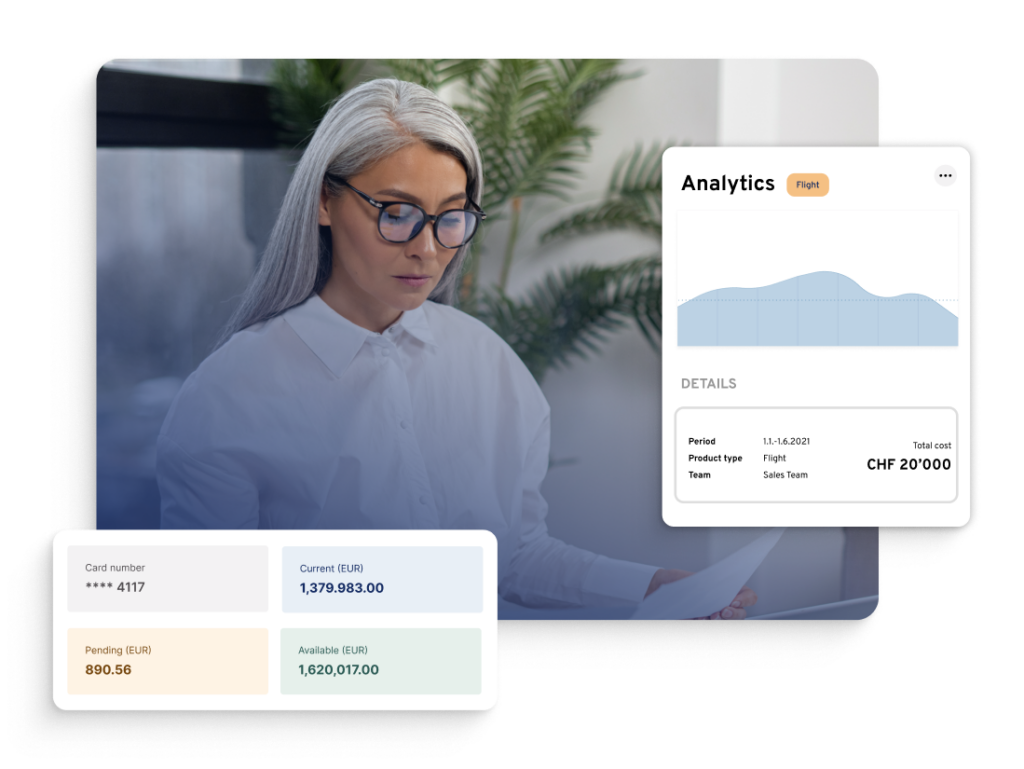
Customer experience and service
Another interesting application of finance AI is customer service, where the adoption of chatbots is on the rise. Artificial intelligence is behind the virtual assistants of many banks, providing personalized financial advice and recommendations to customers.
In fact, right before the pandemic, a study by Juniper Research was predicting that AI-powered chatbots will be saving financial institutions over $7 billion annually by 2023.
This is, of course, thanks to the ability of these chatbots to handle customer inquiries around the clock, reducing the need for human customer service representatives and allowing financial institutions to operate more efficiently.
Overall, the use of artificial intelligence in finance processes is a true game-changer, and I’m curious to see how these trends will progress in the future.
Blog article
Prioritizing Employee Satisfaction: The Case for Better UX in Finance Tools
The world of finance is changing rapidly, with disruptive technologies and shifting consumer expectations reshaping the landscape. Yet, despite these changes, many finance tools remain stuck in the past, with a poor user experience and interface.

Lars Mangelsdorf,
Co-founder and CCO
Next steps
AI is rapidly transforming the way finance professionals approach their daily work. With the ability to automate manual processes, identify patterns and anomalies, and provide valuable insights into spending patterns, AI can help organizations streamline their financial operations and improve their bottom line.
As companies continue to adopt AI solutions in other areas of their business, it is clear that finance cannot be left behind, and the spend management process is an ideal starting point for introducing artificial intelligence technology into the finance department.
If you’d like to see how our AI-powered spend management platform can help you automate processes and save time and costs, while gaining end-to-end visibility and control over your business spending, you can book a demo below.
See Yokoy in action
Bring your expenses, supplier invoices, and corporate card payments into one fully integrated platform, powered by AI technology.
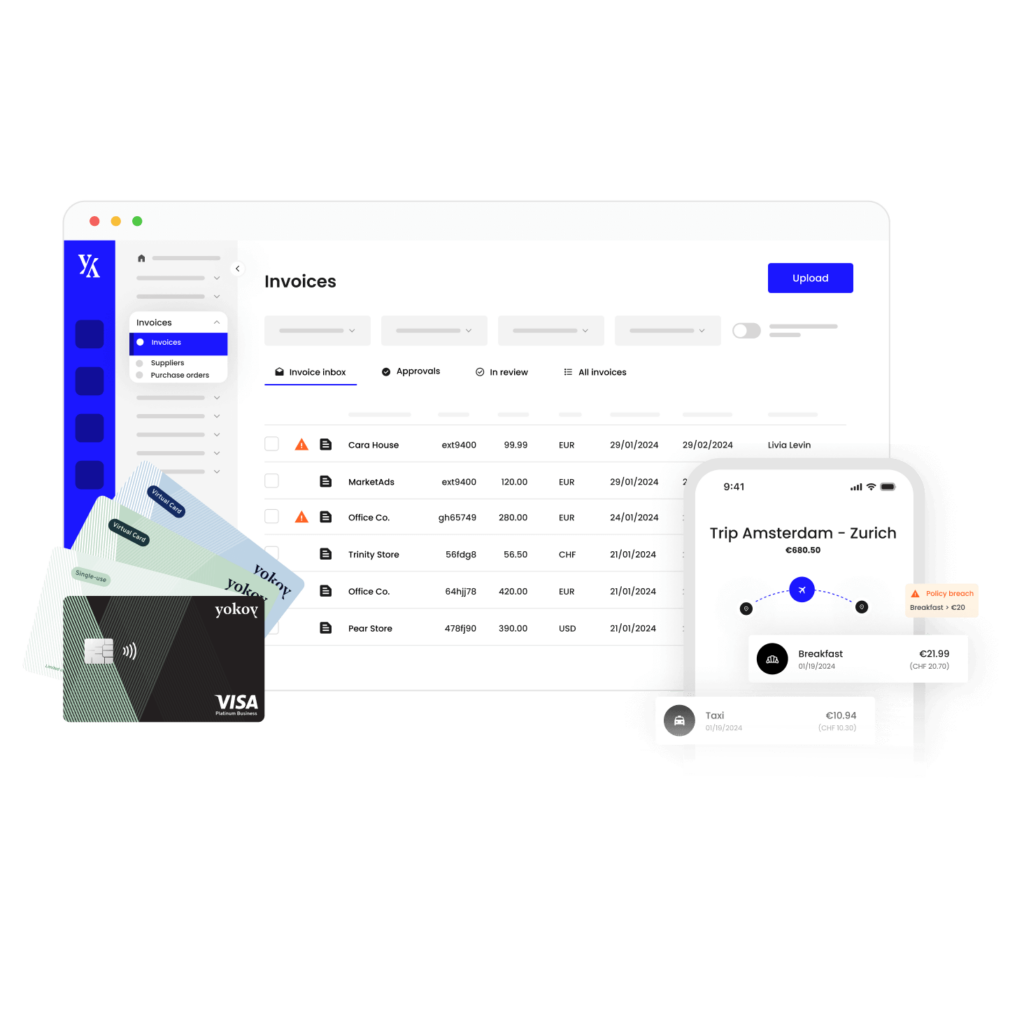
Simplify your invoice management
Book a demoRelated content
If you enjoyed this article, you might find the resources below useful.

